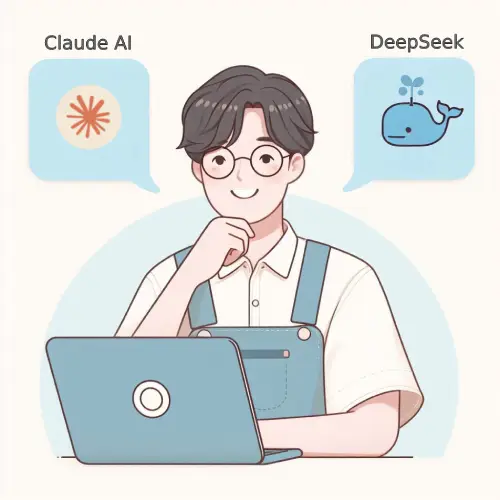
The Evolving Role of AI in Coding
AI has changed the way developers approach coding, to say the least. With AI instruments like DeepSeek vs Claude AI, the game has flipped. However, developers still face challenges, such as navigating complex codebases and debugging intricate issues.
Purpose and Methodology
Our goal here is to compare two powerful tools: DeepSeek v3 vs Claude AI . We’ll dive into a live, unprepared demonstration using a real-world code base. This isn’t just another tutorial; it’s a real test of how these tools perform under pressure.
Overview of the Kilo Text Editor
Let’s quickly touch on the Kilo text editor. It’s a simple, lightweight editor that’s perfect for testing coding assistants. Think of it as our stage where the real action unfolds.
The Kilo Editor: A Testbed for AI
Why Kilo?
Kilo is not just any text editor. It’s straightforward, and it comes with a known bug. These traits make it an ideal choice for our test. In fact, its simplicity lets us focus on the AI’s problem-solving abilities without getting bogged down by complexity.
The Bug in Focus
Let’s zero in on the bug. In Kilo, the function editorDelRow updates row indices incorrectly after a deletion. It’s a small bug, yet perfect for testing the models’ skills in code analysis.
Workflow with LLMs
Presenter’s Workflow
Our presenter uses a simple workflow by interacting with the web interface and dropping files directly into the model. This approach keeps all the files within the model’s context window, which is crucial for accurate analysis.
Comparison with Alternative Methods
Unlike this approach, ChatGPT uses a RAG method. It extracts file slices via a tool before feeding them to the model. This alternative method has its perks but also misses the holistic view provided by the entire file.
The First Test: Bug Detection
Initial Prompt and Responses
We started with a straightforward request: identify critical functions that might cause segmentation faults. Both models highlighted key functions, setting the stage for deeper analysis.
Analysis of editorDelRow
Focusing on editorDelRow, we asked both models to analyze each line thoroughly. Surprisingly, they both missed the bug initially, signalling that even the most advanced models need fine-tuning.
Results and Findings
The plot thickened when Claude Sonnet eventually spotted and corrected the bug after a specific prompt. DeepSeek, however, didn’t catch it. This reveals a subtle edge in Claude Sonnet’s ability to refine code with precise guidance.
The Second Test: Syntax Highlighting
Adding Python Syntax Highlighting
Next up was adding Python syntax highlighting to Kilo. Both models rose to the challenge, but DeepSeek v3 delivered a slightly more comprehensive solution. This shows both strengths and minor differences in their coding strategies.
The Third Test: Code Analysis and Comparison
Comparing HNSW Implementation
Now for the heavy lifting: we asked both models to compare a C implementation of the HNSW algorithm with its original paper. The prompt aimed to uncover differences and improvements.
Key Enhancements Identified
Both models identified major enhancements, like true deletion support. DeepSeek dug deeper, noting concurrency and potential bottlenecks due to complex deletion code. These findings underscore the varying depths of analysis each model provides.
Insights and Benefits
These models offer quick insights, saving developers time. They’re like having a second set of eyes, pointing out things you might miss. They’re valuable instruments in any developer’s toolkit.
Conclusion
Summary of Key Findings
Claude Sonnet finally caught the bug after more focused prompting. Both models excelled in syntax highlighting. When comparing code and theory, DeepSeek found nuances that Claude didn’t. These result highlight each model’s unique strengths.
Evaluating Tools and Trade-Offs
While these tools offer great insights, developers must weigh the trade-offs. No tool is perfect, requiring manual checks to ensure they fit specific needs. It’s like choosing the right wrench for the job; each has its strengths.
Future Potential
These AI tools continue to grow in value for developers. Their potential is immense, and future developments will likely offer even more. Encouraging further exploration will lead to even better solutions down the road.
FAQs
Q: What is the primary difference between DeepSeek vs Claude AI?
A: Claude Sonnet excels in refining code with specific prompts, while DeepSeek offers deeper analytical insights.
Q: How do these tools save developers time?
A: They quickly identify code issues and suggest improvements, acting like a second set of expert eyes.
Q: Can these AI models replace human developers?
A: No, they complement human skills by providing insights but can’t replace human creativity and decision-making.
Q: Which model performed better in bug detection?
A: Claude Sonnet eventually detected the bug with more precise guidance.
Q: What are the potential drawbacks of using these models?
A: Both models require careful prompts and manual verification by developers to ensure accuracy.

I found it fascinating how Claude Sonnet required more targeted prompting to catch the bug. This highlights a gap—how might developers refine their prompts or workflows to get the most out of these tools?